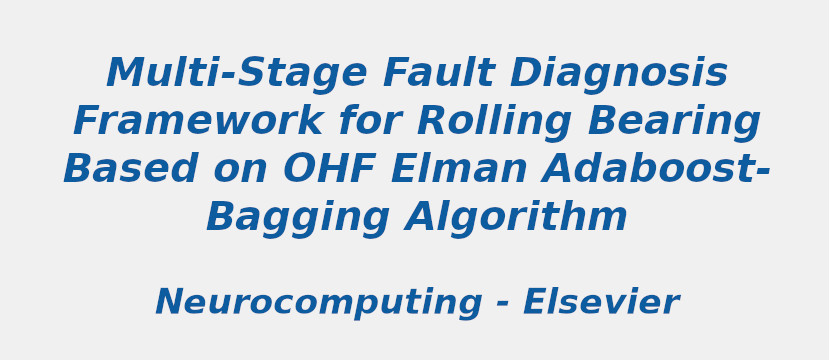Research Area: Machine Learning
With the increasing complexity of industrial equipment, it is urgent to provide timely diagnosis and accurate evaluation to avoid failure. For rolling bearings, it is important to achieve the multi-stage (incipient, intermediate, late) fault diagnosis under random noise. Different from traditional methods, an Output Hidden Feedback Elman Adaptive Boosting-Bootstrap Aggregating algorithm is proposed under a comprehensive diagnosis framework. First, the original signal is decomposed, denoised and reconstructed by Ensemble Empirical Mode Decomposition. Then, OHF Elman neural network is designed by increasing a feedback from the output layer to the hidden layer based on Elman neural network. This improves the memory function for dynamic data of rolling bearings. Furthermore, for achieving diagnostic accuracy and algorithm stability, OHF Elman AdaBoost-Bagging algorithm is developed as a strong learner through the dual integration of AdaBoost algorithm and Bagging algorithm. Experimental results show that the proposed algorithm not only has a good diagnostic performance on different stages of rolling bearing faults, but also achieves higher generalization ability and stability. This multi-stage fault diagnosis framework provides a novel tool and an effective solution for rolling bearing fault diagnosis.
Keywords:
Neural network
Generalization ability
Empirical Mode Decomposition
AdaBoost algorithm
Generalization ability
Author(s) Name: Tangbin Xia, Pengcheng Zhuo, Shichang Du, Wang, Dong
Journal name: Neurocomputing
Conferrence name:
Publisher name: Elsevier
DOI: 10.1016/j.neucom.2020.10.003
Volume Information: Volume 433
